Top Skydiving Positions
Blog
Posted by: Laura Morris
2 years ago
Skydiving body positions can be used to increase/decrease fall rates, create stability in the sky, and improve your overall flying capabilities in order to fly with friends, participate in skydiving competitions, or progress in your skydiving career. Skydivers are a creative bunch, always looking for new ways to fly their bodies in different positions. How difficult, gnarly, and innovative can we get?! For now, we’ll discuss the top skydiving positions and some other skydiving positions that you may see other experienced skydivers do.
What is the Skydiving Position Called?
There are a few different skydiving position names, but the most popular name is “the arch” position. This is the one you may have seen before in videos or pictures. You can practice your arch in the indoor skydiving wind tunnel or try it now! Lay on your belly, point your head and toes up to the sky, and bring your arms to a 90-degree angle with your thumbs pointing towards your ears. There you have it – the skydiving arch! From there, skydivers can get pretty creative with other skydiving body positions to fly differently.
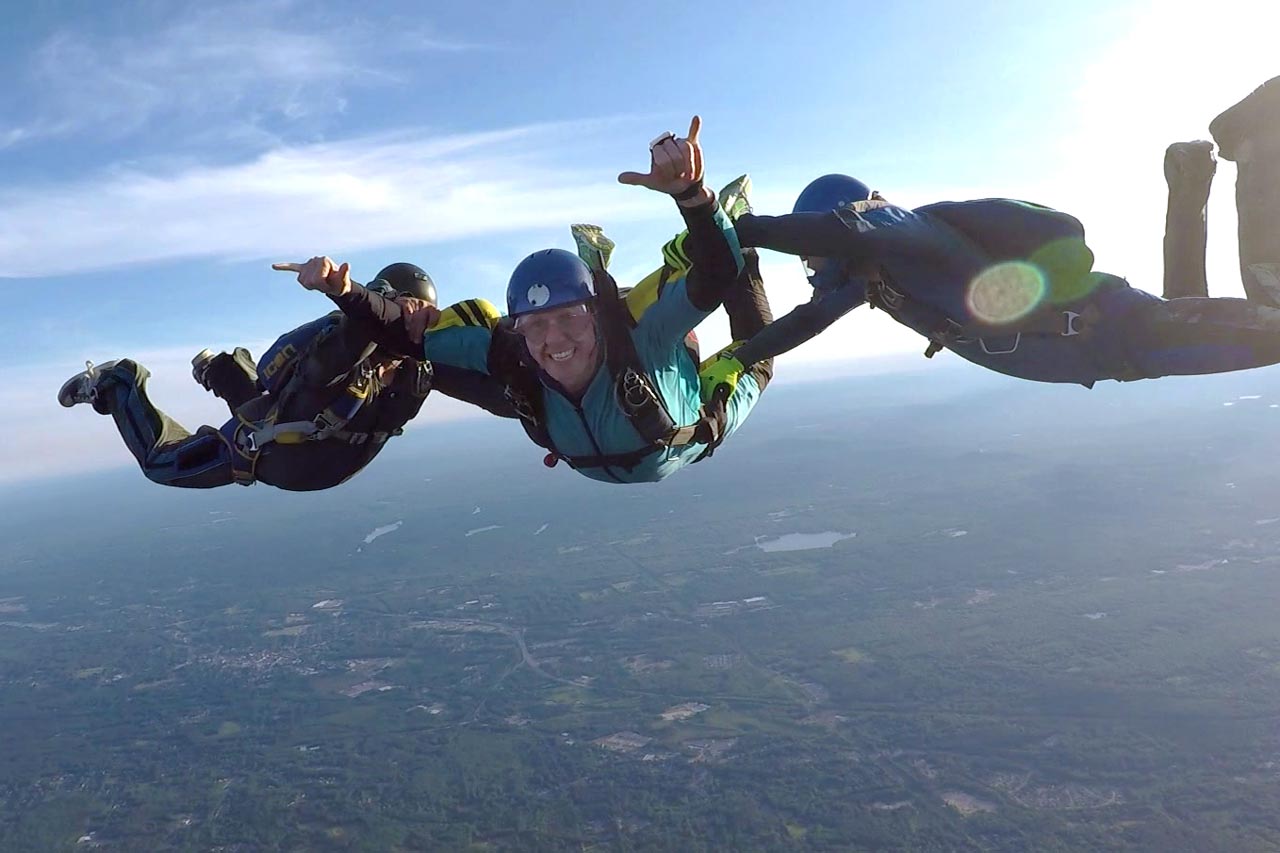
Top Skydiving Body Positions
What are the basic skydiving maneuvers? It all starts with belly flying! Here are the four skydiving belly position names and how they differ:
The Box Skydiving Position: “Flat Flying”
When we think about basic skydiving maneuvers, we first think of the ‘box’ skydiving position, or “boxman” position. In the box position, the belly is facing towards the Earth (ensuring that the skydiving rig is pointing up towards the sky), arms and shoulders are at 90-degree angles with the legs shoulder width apart and the knees close to a 90-degree angle. This body position has a slight arch in the hips for stability and puts your chin up to keep those eyes on the horizon. As you may be able to tell, this skydiving body position takes on a “boxy” shape, hence the name “boxman”! The box skydiving position is the most basic form of skydiving positions and an introduction to flying in the sky.
The Arch Skydiving Position: “Banana”
Once you’ve got the box position down, you can focus more on creating the arched position. You may have heard this position described as the banana position in skydiving and that is because, well … you take on the shape of a banana! In the skydiving arch position, the goal is to arch at the hips by pushing your hips forward, rather than bending your back or chest. Keep that booty down, and chin up! Sometimes pointing your toes can help with keeping the legs and hips square and maintaining that arch position.
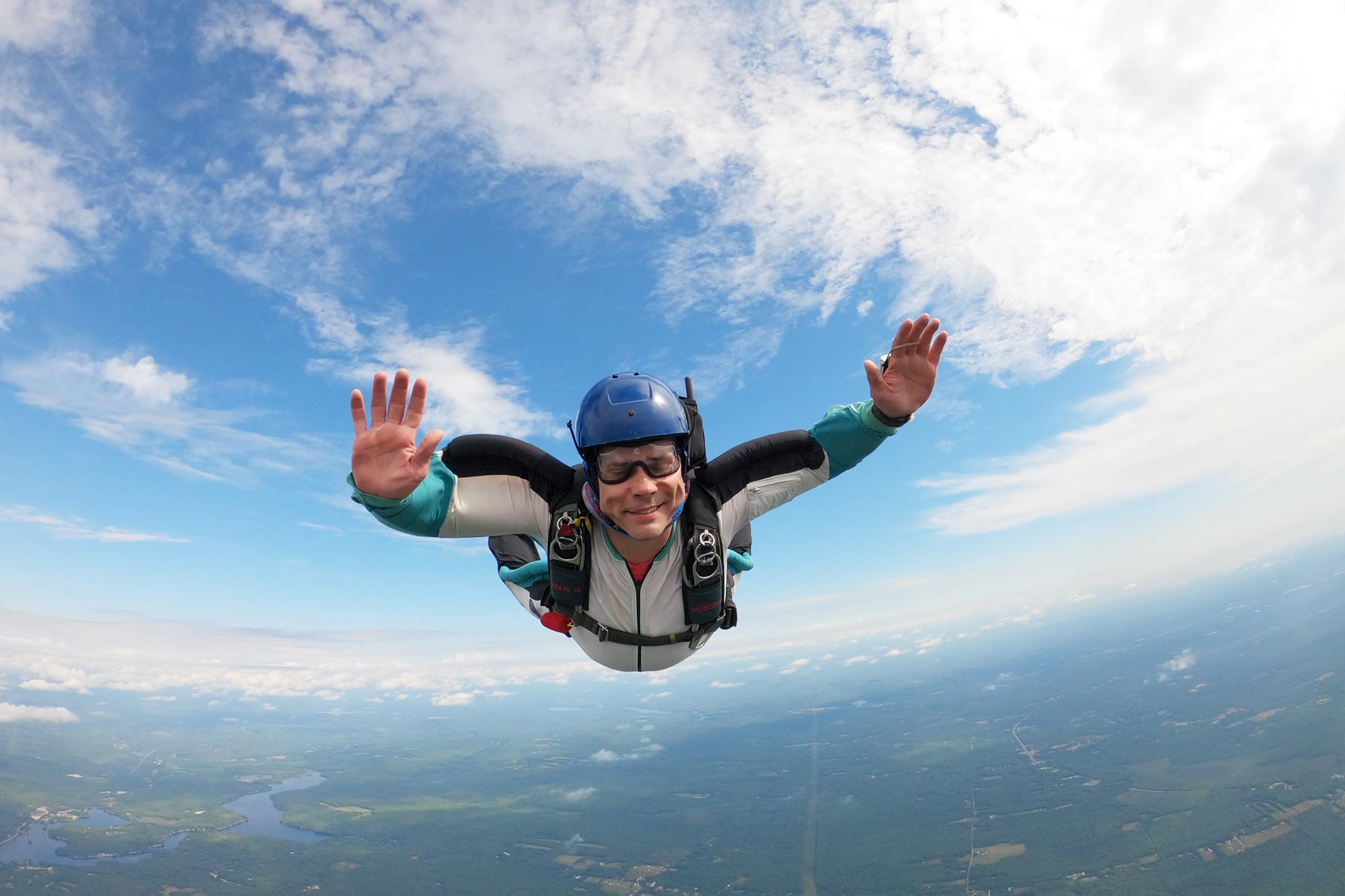
The Delta Skydiving Position: “Tracking”
The delta position in skydiving is what you will learn if you ever decide to get your skydiving license to skydive completely on your own. Skydiving is a lot of fun, but we are serious about safety! When jumping with friends, it can be dangerous to deploy the parachute in close proximity to other skydivers. So when it comes time to deploy the parachute, skydivers will take on the “delta” position to “track” away from each other and deploy their parachute safely, free of obstructions. The delta position looks like what you would picture a superhero flying like extended legs, arms swept back to their sides, and zooming across the sky! Not only are you being safety-minded of yourself and others, but you’ll also look, and feel super cool doing it. Woo!
The Mantis Skydiving Position: “Advanced Belly”
The mantis skydiving position is an advanced belly orientation in which you have a positive arch, legs elongated with the knees closer together, hands out in front of the face and elbows pointed downwards resembling a praying mantis. This body position is used for high-level belly flying, Accelerated Freefall (AFF) instruction, formation skydiving (relative work), complex belly sequentials, or for anything else that requires a lot of range of motion for the hands or to fall at faster speeds.
Advanced Skydiving Body Positions
Skydiving body positions get more challenging and exciting from here. As you progress to different skydiving licenses and become more skilled, you can begin flying in more high-speed positions. Here are some other, more advanced skydiving body positions:
- Backflying: Backflying is where the skydiver will fly with their backs facing the Earth. This body position is usually only used in high-performance angle flying, tracking, or as a recovery position to transition from or into high fall rate maneuvers such as sitflying or head down.
- Sitflying: Sitflying is where the skydiver will fly in a seated position and is used for faster fall rates and in Vertical Formation Skydiving (VFS).
- Head down: Head down refers to flying in an upside-down or head-down position. There are two ways to fly head-down: “shelf” (both legs bent 90 degrees backward) or “daffy” (one leg bent backward, one leg bent forward). This position is one of the most advanced skydiving body positions and is used for faster fall rates and VFS.
- Angle: Angle flying is one of the newer body positions that is making a scene in the skydiving industry. This is where skydivers will fly in different degrees of movement, at super-fast speeds (upwards of 200 mph)! Angle flyers can fly on their bellies or backs, facing each other and getting deeper into the angle. Only highly experienced skydivers should perform this advanced flying maneuver.
The sky is your oyster! Come try your hand at the skydiving arch position with us at Skydive New England – book your jump today. Blue skies!
You May Be Interested In:
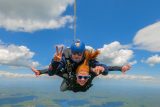
How Much Does Skydiving Cost? Pricing Breakdown & What to Expect
5 days ago by Curtis White
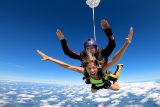
The Skydiving Adrenaline Rush: A Thrill Like No Other!
1 month ago by Curtis White
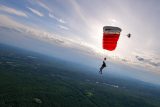
What Is Static Line Skydiving? Your Guide to Static Line Jumps
2 months ago by Laura Morris
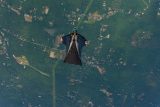
How to Get into Wingsuiting: Your Guide to Wingsuit Flying
3 months ago by Curtis White
Enter to Win a Free Skydive
Join our email list and enter to win a free tandem skydive. Drawings in April and December; winner announced on social media.
You’ll get a $10 coupon toward a tandem just for signing up! Must be 18 and under 240 lbs to jump.
*By submitting this form, you are consenting to receive marketing emails from Skydive New England, 40 Skydive Lane, Lebanon, Maine 04027. You can revoke your consent by using the SafeUnsubscribe link located at the bottom of every email. Emails are serviced by Constant Contact.
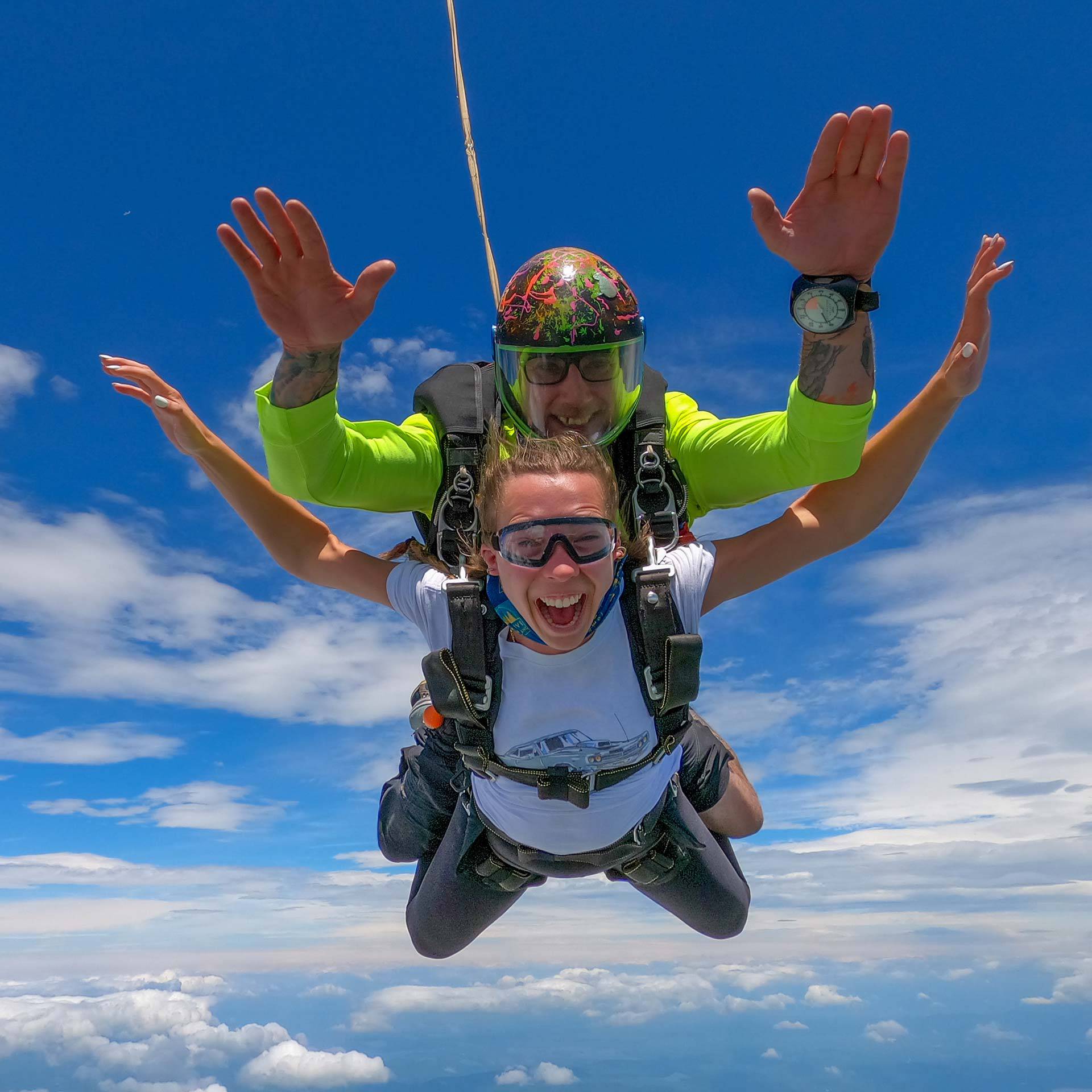
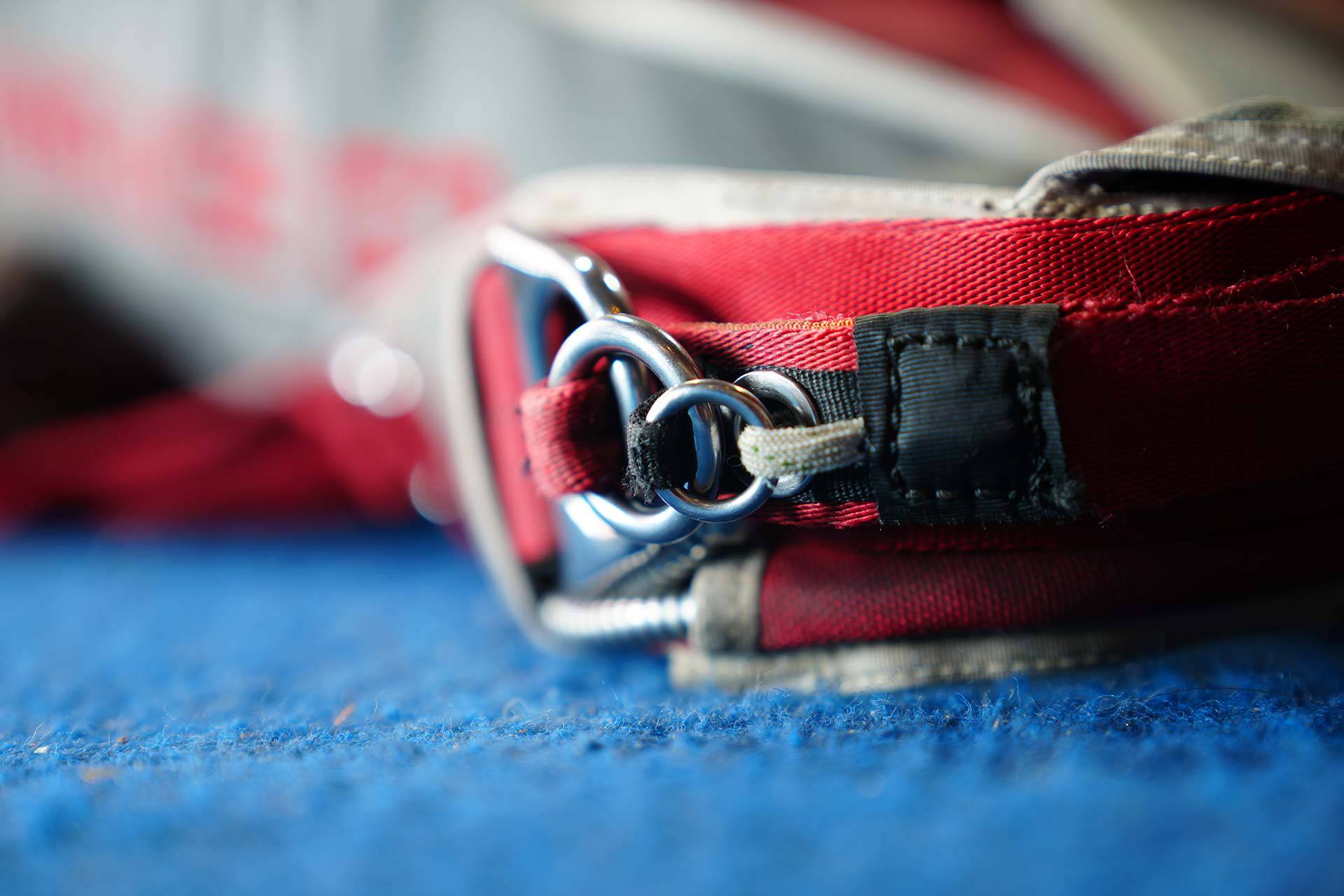
Even More Wicked-Fun Than It Looks!
Come see why the biggest DZ in New England is also the best.
